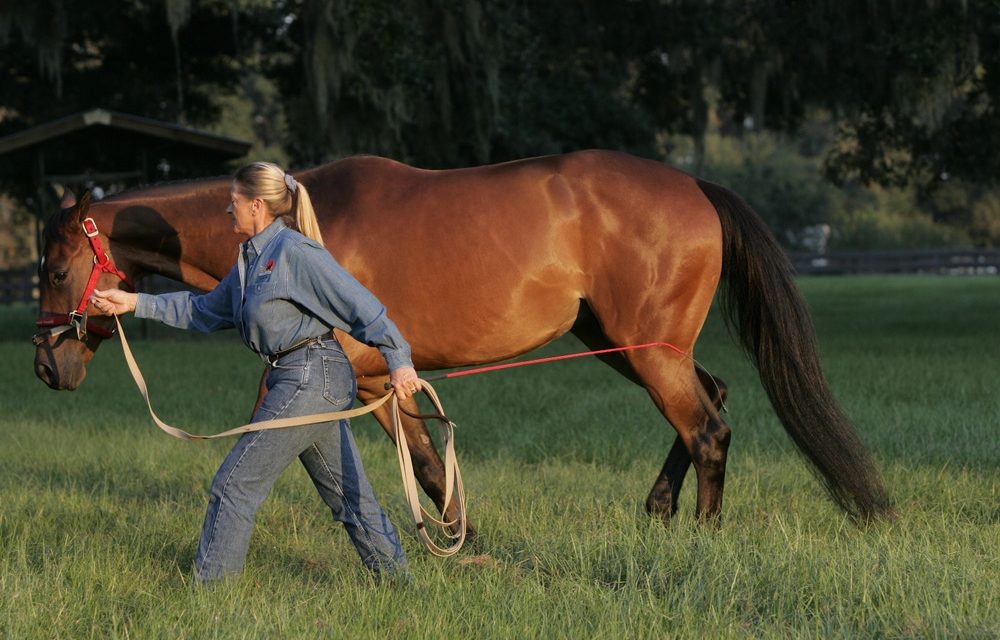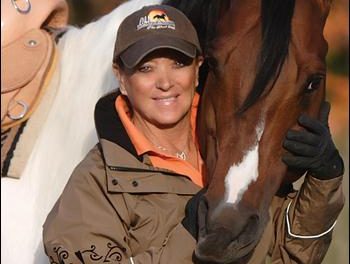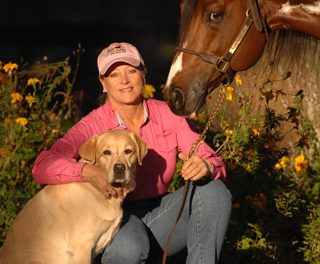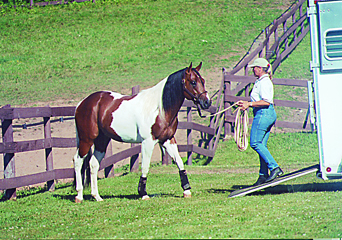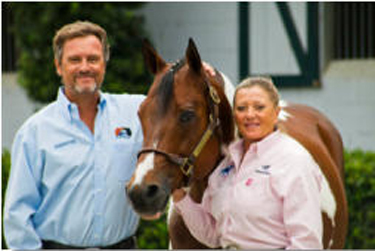Palm Partnership Training™
Building a Partnership with your Horse
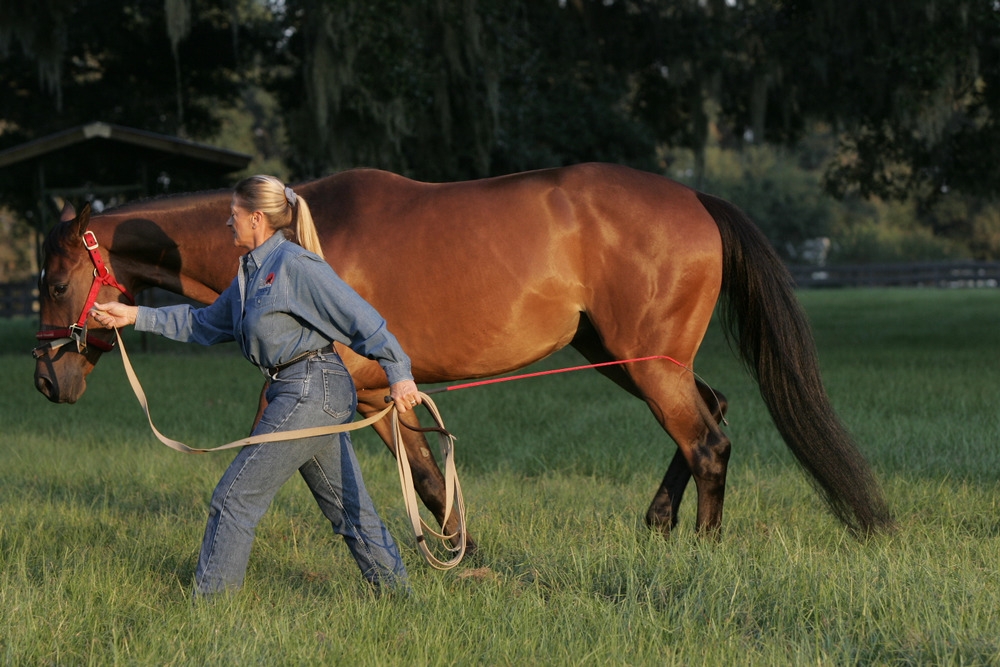
Before we start on specific lessons, you need to understand and follow my Golden Rules for ground training any horse. We covered the first two in past issues of this magazine and website. To review, Golden Rule #1 is to respect your position, as a handler, in relationship to your horse. Golden Rule #2 is to make straightness a goal.
Golden Rule #3: Don’t Pull
Keep the longe line loose and avoid the all too common tendency to “muscle” a horse through a ground training maneuver. Too often I see handlers trying to “steer”, stop, and get their horse to go forward by pulling or pushing his head from the bottom of the halter. This violates all of the Golden Rules! The more you pull on the lead, the more the horse will learn to lean against it. This only desensitizes him and increases the physical and mental stress on both of you because you get less response.
Handlers can cause a horse to lose straightness by pulling on the longe or lead shank, which swings the horse’s head out of alignment toward them. A loose lead allows your horse to be independent. The more your horse learns to keep his own space, the more he will be able to concentrate and obey your commands because he will not have anything to lean on or resist against.
If your horse gets too close to you while teaching ground training maneuvers, push his head away with your hand on the side of his head rather than pushing it away from beneath the halter. Or shake the longe toward the horse to encourage him to maintain the desired space. On the other hand, if the horse resists coming toward you, put a slight tension on the lead, but release it the instant the horse comes.
I use voice commands, in addition to my position, to reinforce what I am asking my horse to do. A deep vocal tone tells a horse to “do it now” or “respond and react to me”. A mellow tone is rewarding and soothing. I also introduce the “cluck” as a signal that means, “move”.
Golden Rule #4: Reward Progress
We covered this golden rule before, but it bears repeating. Be patient. Ground training takes time. You may spend several days or weeks on one lesson. Make your sessions short to keep your horse’s attention and find a way to end each one on a positive note. Rushed or impatient handling now will affect future training sessions. Reward any progress your horse makes.
Ground training is not mentally or physically fatiguing for a horse so it is something you can do every day–if you keep the lessons short and interesting. It is a must for young horses. For older horses it offers variety to your schooling and another opportunity to spend time together. So practice!
Honor these Golden Rules and you will set a foundation for ground training success. Next I’ll give you specific ground training lessons you can teach your horse to improve your partnership on the ground and in the saddle.
Your Next Step…
Too often handlers tend to lag behind their horse’s movement when teaching ground training maneuvers. They end up pulling on the horse to slow down his natural movement. When a horse is first learning to respond, handlers should stay up with the horse’s speed. Once the horse is responsive, keeping his space, and leading without pulling the handler can increase the difficulty by asking the horse to perform the maneuver at different speeds.
Your next step in ground training your horse is to watch your steps! Learn how to move with your horse at his speed, not making him match yours! Until he’s mastered the basics, you must regulate your speed to his and not the other way around.
Lynn’s Tip
While it takes some horses longer than others to get acclimated to new situations, it is important that they get exposed to different surroundings and learn to accept them. The only way for a horse to learn is for him to get more exposure, not less.
Lynn Palm
Royal Palm Ranch, LTD.
9445 NW 60th Ave.
Ocala, Florida 34482
352-629-3310 – Phone/Fax
800-503-2824

